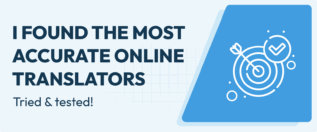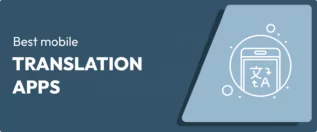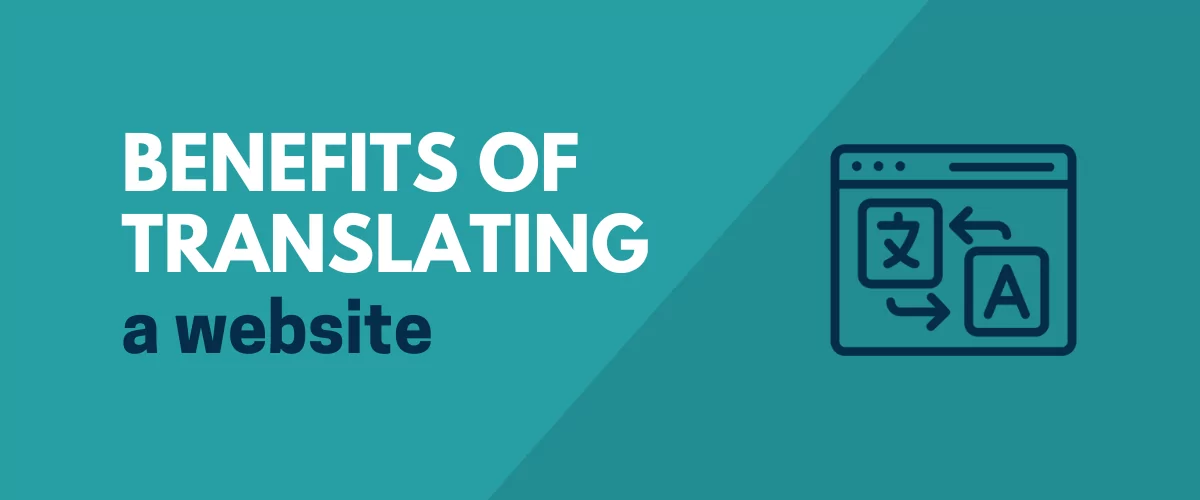
In this post
Are you wondering what are the benefits of translation? If so, you aren’t alone.
You’ll often catch many beginners asking questions such as:
- Should I translate my website?
- What are the benefits of translation?
- Is website translation a worthy investment?
- What are the benefits of machine translations?
- And such like questions.
If you’re in such a situation, don’t worry one bit.
In today’s article, we will go over several advantages of translation.
Why?
We aim to help you decide if translating your website is worth your time and money.
Or if you should forget about translating your website and stick to one language.
But first, let us provide some context to build momentum 🙂
Benefits of Translation: The Stats
English is arguably one of the most spoken languages in the world, with over 1.4 billion speakers, according to Statista.
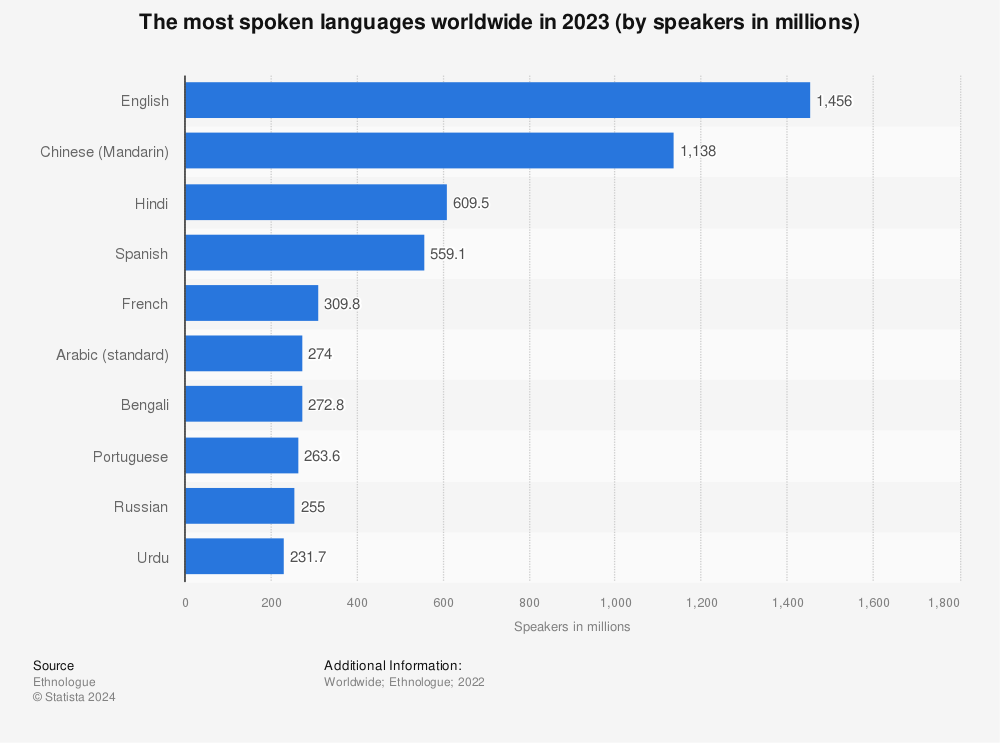
This number comprises about 380 million native speakers and 1.077 billion people who speak English as a second language.
At the same time, Mandarin Chinese is the most popular language by the number of native speakers.
That’s right, more than 939 million people speak Mandarin as their first language.
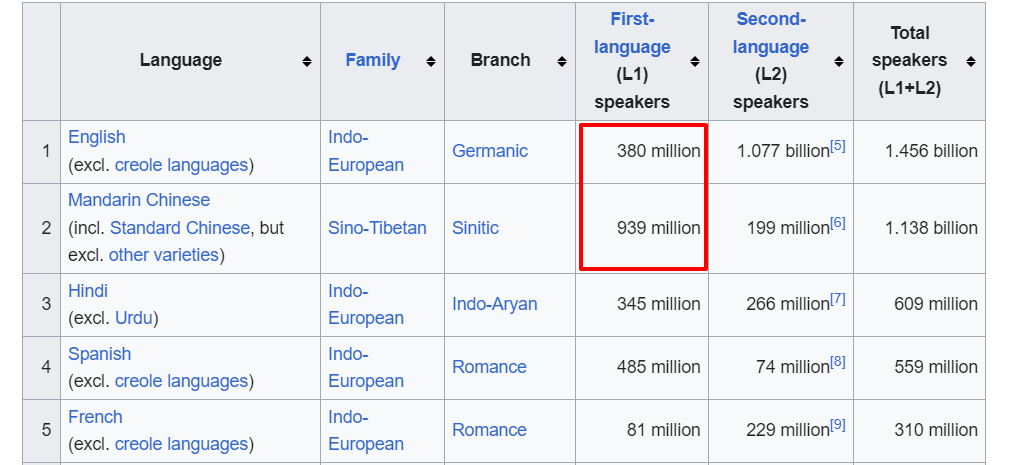
Hindi, Spanish, and French take the third, fourth, and fifth positions, as seen in the above table from Wikipedia.
Now, here is the thing.
If you have an English website, you have a probable audience of about 1.456 billion people.
If you translate the website into Chinese, that audience grows by an extra 1.138 billion people.
Translate your English website into the top five most spoken languages, and your prospective audience will jump to over 4.072 billion people.
While you won’t reach all these people, you can see where I am going with this.
One of the main benefits of translation is reaching a broader target audience in their native languages.
And as Nelson Mandela once quipped:
If you talk to a man in a language he understands, that goes to his head. If you talk to him in his own language, that goes to his heart.
Again, I believe you see where I’m heading with this.
I mean. You want to capture the cultural nuances and subtleties of the target language, more so if you aim to localize your content.
These are just two of the benefits of translation. We will cover more later in the article.
After that, we will share a few handy tips and one of the best translation tools in the market.
With that preamble, let us dive right in.
What is Translation?
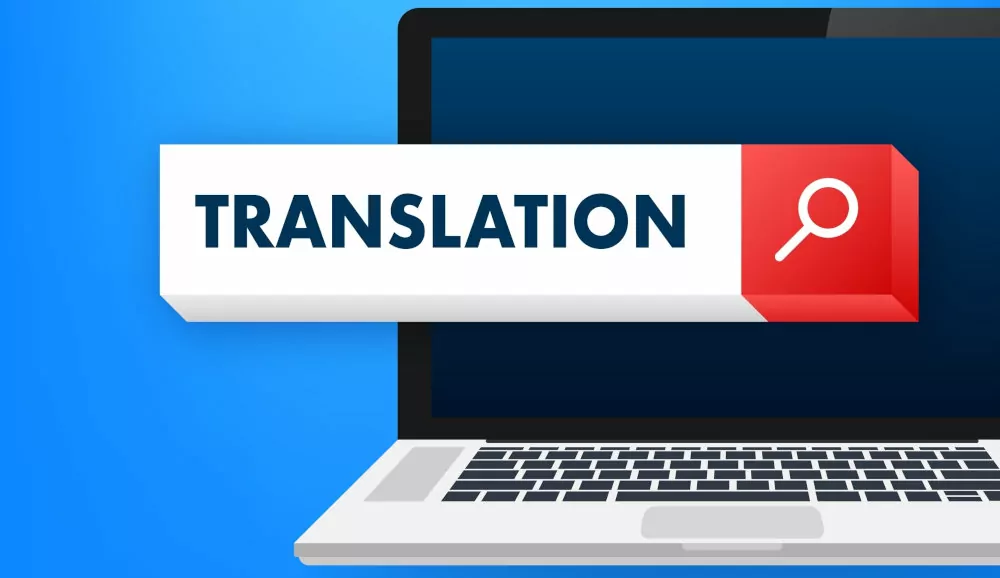
For many beginners, translation seems straightforward at first. Take some text and translate it into another language. It is as simple as A, B, C. Right?
How hard could it be? And what could go wrong?
It turns out that translation is a tad more challenging than you imagined, and a whole lot can go wrong if you miss the mark.
At its basic level, translation encompasses converting your text into other languages.
In real-world applications, translation involves converting everything on your website into other languages.
When I say everything, I mean your:
- Textual content – This includes text on your website, eBooks, PDFs, reports, infographics, marketing material, subtitles, transcriptions, links, and more;
- Image translation – You can translate brand images such as logos, product photos, merch, and other marketing collateral;
- SEO elements – For best results, it’s best to translate your meta descriptions, URL slugs, alternative text, and other elements;
- Multimedia translation – Endeavor to translate your audio or video content into other languages. This involves translating podcasts, video courses, interactive quizzes, audiobooks, and more;
- Navigation menus – You should translate your menus for better user experience in the target language;
- eCommerce – You should consider translating your WooCommerce store to reach a broader audience, engage with the customers, and boost your conversion rates;
- Slang – You want to translate colloquial and informal expressions in your content accurately;
- Your admin dashboard – Allow authors, moderators, and other users from different linguistic backgrounds to choose the languages they want in the admin dashboard;
- And more.
Main Elements of Effective Translations
As you can see, translating your website goes far beyond text content.
That said, website translation is a doable process involving the following elements.
- Expertise in linguistics – For best results, you need a deep understanding of the languages involved in the translation. This is especially true if you’re translating your website on your own as opposed to hiring a translation company;
- Translation accuracy – The content you translate should retain the context and meaning of the source message;
- Cultural sensitivity – As a professional translator, you should consider the cultural nuances and native speakers of the languages involved. Otherwise, you might offend the target audience;
- Comprehension and vocabulary – Accurate translations require having a good grasp of the terms, phrases, and expressions used in the content;
- The proper translation tools – Translating a website is an arduous process that can drive the best of us up the wall. For this reason, you need the best translation tools you can lay your hands on. This includes translation management systems (TMS) and automation tools.
These five elements will come in handy whether you’re translating content manually, using software, or relying on a third-party translator.
Related resource: Translator Accounts allow third-party translators to translate the website directly from the front end.
That out of the way, let us quickly go over the benefits of translation.
What Are the Benefits of Translation?

While effectively translating a website may be challenging, it offers several benefits that make it worth it.
Here are some of the benefits of translation to keep in mind.
1. Enhanced Reach and Accessibility
One of the main benefits of translation is expansion of your target audience.
Translating your website content into multiple languages is an incredible way of overcoming language barriers. This allows you to reach a broader target audience of people who don’t speak English natively or as a second language.
In addition, translating your website into multiple languages allows you to reach users who speak minority languages. When you do this, you grow your prospective audience further while encouraging inclusivity and a loyal customer base.
At the same time, website translation lets you target new and emerging markets with diverse linguistic backgrounds. When you offer languages relevant to these new markets, you can quickly establish yourself in regions where your business is unknown.
With multilingual content, your business can attract global attention through social sharing, word-of-mouth, and search engine visibility. This leads to increased brand awareness and recognition worldwide.
In other words, website translation allows you to make your content accessible to diverse audiences from different cultural and linguistic backgrounds. It’s a strategic approach that broadens your brand’s reach and shows your commitment to inclusivity and cultural sensitivity in a global economy.
For instance, CodeLobster reached more people internationally after translating their website and PHP IDE into multiple languages. They also use a language switcher menu in the native languages, making it easy for users to choose their languages.
2. Enhanced Brand Reputation
Pivoting from the previous point, enhancing your brand reputation is another main benefit of translation.
When you translate your website into multiple languages, you can effectively cater to multilingual and multicultural audiences.
This is what I mean.
Translating your content offers you the pristine opportunity to appreciate the cultural diversity of your website visitors. This is a fabulous way to demonstrate your dedication to inclusivity, which reflects well on your brand image.
Secondly, website translation allows you to adapt your content to local interests and preferences.
How does this help enhance your brand reputation?
It’s simple. When you exhibit that you understand local customs, slang, and cultural nuances, your content will resonate with the target audience.
This leads to better user engagement, acceptance by natives, and improved brand reputation.
Thirdly, speaking to your audience in their native language fosters a sense of familiarity and trust.
This bolsters credibility and facilitates stronger and healthier connections between global users and your brand.
There is more…
Translating your website professionally lets you avoid cultural misunderstandings and offensive content. This helps you to safeguard your brand’s reputation and integrity in a global market.
Still on brand reputation, offering seamless user experiences in different languages fortifies brand loyalty. Doing so encourages repeat visits to your site and long-term relationships with your business.
If you play your cards right, satisfied customers become brand advocates who promote your business freely.
I mean. Satisfied multilingual customers recommend your products or services to friends and family. This amplifies word-of-mouth and contributes to brand advocacy, which leads to an enhanced reputation for your business.
Lastly, website translation helps you to stand out from competitors who haven’t adopted multilingual communication.
If you’re wondering, this is an effective way to differentiate yourself and attract people who align with your overall message.
How does this improve your brand reputation?
First, it establishes you as a forward-thinking and customer-centric organization. Second, offering multilingual content is a standard practice in today’s global marketplace.
Customers expect your brand to offer an inclusive user experience that positively influences how people view your business.
3. Improved User Experience
Another great benefit of translation is improving the user experience on your website.
Why is that important?
Improving user experience is crucial for captivating and retaining your target audience.
First, translating your content removes language barriers. This lets people from different backgrounds understand and use your website no matter where they are from.
By catering to speakers of different languages, you demonstrate your commitment to accessibility and usability, which makes your website welcoming to more people.
On top of that, translating your website allows you to offer personalized experiences to your users. You can tailor your content to groups and subcultures, addressing their distinctive interests and cultural backgrounds.
Secondly, translation allows you to localize your website. As such, you can adapt elements such as images, currencies, and date formats to local conventions and customs. This improves user engagement and creates a sense of belonging among users.
Further, you can deliver marketing messages in the user’s native language, which leads to increased user satisfaction and more conversions.
Thirdly, translating your content is an effective way of increasing dwell time. That is because users from different linguistic backgrounds spend more time interacting with content in a language they understand.
This, in turn, leads to increased user engagement and immersion in your website.
In addition, providing a seamless multilingual experience leads to lower bounce rates.
Why?
Users are more likely to spend more time on your website and explore more pages when they can easily understand your content.
4. Boosting SEO and Visibility
If you’re still wet behind the ears regarding digital marketing, search engine optimization (SEO) involves tuning your website and content to rank higher in result pages.
But how does translating your website into multiple languages improve SEO and visibility?
For starters, we have multilingual keyword optimization.
When translating your website, start by conducting keyword research in different languages. This lets you pinpoint relevant keywords and phrases local website visitors use to find your content.
Then, optimize your multilingual content with these keywords to rank higher in search engine result pages (SERPs).
Secondly, translating your content into multiple languages helps you expand your geographic reach.
This helps you enhance your presence in international markets. As a result, more people can discover and engage with your website using localized search queries.
Besides that, you can use geo-targeted content optimization to tailor your content to specific cultural contexts and geographical regions.
This helps search engines understand the relevance of your content to local users, which results in higher rankings for location-specific searches.
Thirdly, creating helpful multilingual content shows search engines that your website is authoritative and trustworthy. This leads to a higher domain authority and higher rankings across language-specific search results.
Additionally, earning backlinks from local websites will increase your authority and relevance in local searches, which leads to more organic traffic and enhanced SEO performance.
At the same time, optimizing meta descriptions, titles, and alt tags in each language is a surefire way to ensure your content is accurately represented in local search results.
This translates into higher click-through rates and visibility in SERPs.
But that’s not all…
Providing your content in multiple languages lowers your bounce rates.
The bounce rate is an important Google ranking factor. It represents the percentage of people who exit your website immediately and without interacting with other pages.
To search engines, a super-high bounce rate indicates people don’t find your content helpful or something on your website is broken.
As a result, search engines award you with lower rankings, and the converse is true.
Offering your content in multiple languages encourages website visitors to stay longer and explore more pages since they understand the information you present.
This lowers your bounce rate, which is definitely what you want.
Another thing.
Translating your website with consideration for contextual relevance lets you capture a wide range of user intents.
This lets you optimize your multilingual content for long-tail keywords and niche-specific search queries.
You should also monitor cultural trends in different regions. This allows you to align your content with local searches so that your website remains relevant and competitive in SEO.
Last but not least, monitoring the performance of your multilingual SEO efforts provides valuable data about keyword rankings, user engagement, and conversion rates.
You can use this data for strategic planning and to improve your future multilingual SEO campaigns.
As a quick example, renowned internet marketer Neil Patel increased his traffic by 47% and the number of new users by 60% after translating his website into 82 languages!
5. Increased Conversions and Revenue
Another exciting benefit of translation is increased conversion rates and revenue.
I say exciting because who doesn’t like to make more money? After all, revenue is the main aim and lifeblood of any business.
So, how does translating your website into more languages increase conversions and revenue?
Let’s start with conversions.
A conversion occurs whenever a user completes a desired action on your website.
This could be:
- Picking up the phone to call you;
- Filling out a contact form;
- Downloading a file;
- Joining your email newsletter;
- Clicking affiliate links;
- And purchasing a product, among other things.
Registering high conversion rates on your website means you’re doing things right.
A low conversion rate is the exact opposite.
How does website translation increase conversions?
Speaking to your diverse audience in a language they understand fosters trust and confidence in your brand. This eliminates hesitation that would otherwise keep website visitors from converting.
In addition, multilingual content eliminates language barriers, allowing users to interact with your website in meaningful ways.
On top of that, offering translations shows international customers that your business values their language and culture.
This drives users to perceive your brand as more reliable and professional than competitors. As a result, customers are more likely to convert.
Furthermore, happy international customers share positive reviews with others, influencing purchase decisions and boosting conversions.
And how does website translation boost revenue?
More conversions usually lead to more revenue in one way or another.
Here’s a detailed explanation.
First, translating your content into multiple languages makes the purchase process simpler.
In other words, a seamless multilingual shopping experience reduces obstacles, leading to more conversions and sales.
Secondly, website translation includes incorporating local currencies and payment options.
Doing so facilitates seamless transactions since buyers are more confident using familiar payment gateways.
Thirdly, translating your website includes crucial content such as shipping, ToS, and return policies.
As such, global customers clearly understand the terms involved with their orders.
This eliminates hesitation and uncertainty and boosts transparency. At the end of it all, you have more conversions and sales and fewer returns.
Some fitting examples would be Apple.com (126 languages) and Google Search (149 languages).
6. Cost-Effectiveness and Efficiency
Another notable benefit of translation is that the process is cost-effective and efficient.
For starters, you don’t need to create new content, which, as we all know, is a costly affair. All you have to do is translate the same content into different languages and enjoy the cost savings.
Cost savings, you say?
That’s right. Website translation is often a cheaper and more scalable way to reach a global audience than traditional methods, including PPC ads, email marketing, TV, and print adverts.
In the same light, engaging and retaining existing users with translations is often more cost-effective than traditional methods.
That plus multilingual content has higher returns in the long term.
Additionally, investing in website translation is a sustainable growth strategy for creating a presence in new markets.
It is also a fabulous way to diversify your revenue streams (in the new markets) and reduce overreliance on costly one-time promotional techniques. The other benefit of translation is efficiency, thanks to advances in technology.
This I say because, without the right tools, translating content can be a tough row to hoe.
For instance, translation management systems help you to automate and centralize your translation workflow. This minimizes manual effort and errors. Also, it streamlines collaboration among editors, project managers, and translators.
Additionally, don’t forget the benefits of machine translation and artificial intelligence (AI).
While machine translations and AI might miss cultural context and other subtleties of different languages, these technologies are valuable.
For instance…
TranslatePress is an exceptional tool that accelerates the translation process, allowing you to translate vast amounts of content quickly and efficiently without compromising quality and precision.
Its advanced features make it a cost-effective solution for businesses and individuals who require accurate translations. This tool lets you enjoy all the benefits of translation without trying hard on your part.
On top of that, tools such as TranslatePress save all of your translations in a terminology database, eliminating time-consuming repeat translations.
Saving your translations also ensures coherence and consistency across your translations. All these factors contribute to translation efficiency.
Other than improved efficiency, another benefit of translation is the measurement of return on investment (ROI).
Tracking key performance indicators (KPIs) such as customer lifetime value, conversion rates, traffic, and revenue helps you measure the ROI of website translation.
This can help you decide if translating your website into multiple languages is worth your time and money.
In other words, it is simple to measure the impact of website translation on revenue.
This can help you make well-informed decisions to allocate your resources accordingly.
7. Abiding by Legal Requirements
Unbeknownst to many people, there are several laws governing translation.
That’s right, translation goes beyond converting content to other languages. In some countries, regions, and industries, the law requires website owners to provide accurate translations to users.
Translating your website into other languages is another benefit of translation because it helps your business avoid repercussions such as penalties and fines.
For example. in the US, you must comply with stipulations outlined in the following language access laws:
- Title VI of the Civil Rights Act of 1964;
- Executive Order 13166;
- Americans with Disabilities Act (ADA);
- Voting Rights Act of 1965;
- Affordable Care Act.
In the European Union (EU), you must abide by the following laws:
- EU Machinery Directive 2006/42/EC;
- GDPR.
In Canada, we have Bill 96.
These are just a few examples. Check with your lawyer to ensure you aren’t breaking the law by neglecting users who don’t speak English.
With the benefits of translation aside, how do you translate your website like a pro?
Benefits of Translation: A Case for TranslatePress
While translation has many benefits, it’s a tough nut to crack, especially if it’s your first time.
This is precisely why you need a solid translation plugin such as TranslatePress.
The tool ships with an impressive suite of features that make translating your website a breeze.
If you’re pressed for time, you will be happy to learn that TranslatePress supports automatic translations via Google Translate and DeepL.
You work inside a visual translation editor that makes fine-tuning your translations (no matter how complex) incredibly easy.
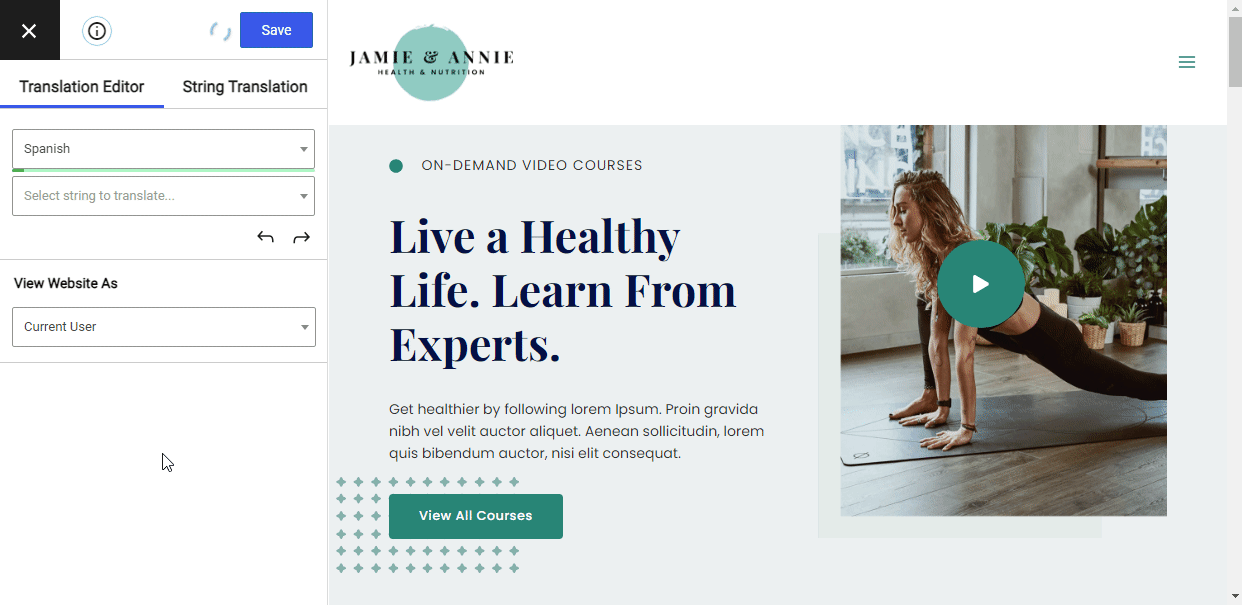
The plugin also boasts several nifty options, as highlighted on this TranslatePress features page.
What’s even better? You have a completely free version that lets you translate your website like a boss.
For more power, don’t hesitate to spring for the paid version.
TranslatePress Multilingual
Benefits of Translation: Final Words
In this article, we covered seven benefits of translation in great detail.
I hope you can now decide whether translating your website is worth your time or money.
In a nutshell, the benefits of translation include enhanced reach, better brand image, improved SEO, and increased revenue, among others.
Are you privy to other advantages of translation? What was your main takeaway today? Did we miss something?
Please share your thoughts and suggestions in the comment section below.
Happy translating, amigo!

